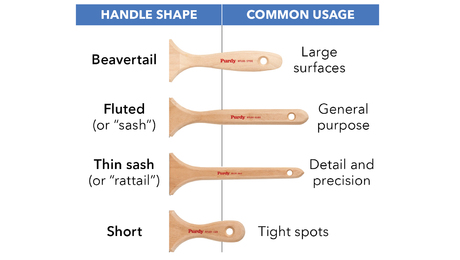I am in the process of finishing a powder room in my basement. I want to tile the floor only. The floor is poured concrete that was painted at one time. The paint has worn in spots but is not peeling. I was going to use thinset to set the tiles. Can I just thinset over this? Should I remove/rough up the paint first? I don’t know how old the paint is – the house was built in 1951. It could be lead paint in which case trying to remove it could be worse than leaving it alone. If the paint is not flaking will the thinset work? Should I use mastic instead? This is only a powder room so there is no standing water/puddling to worry about like after showering.
Thanks for the help.



















Replies
You're right, it could well be lead paint, and sanding would create problems. Use modified thinset and just go over the paint.
I'm sorry, I thought you wanted it done the right way.
By modified thinset do you mean with the admix added or is it more specialized than that. Should I clean the floor first or does the thinset stick to just about anything - especially my tools.
The dry cement-type thinset comes in two varieties from any manufacturer: regular and modified. Then, within the modified catagory there are 3-4 variations. If you buy the regular, you can also buy a liquid admix. There are certain situations where regular thinset is preferred. Lowes sells Mapei brand, Home Depot sells Custom ... both are good. Oh yeah, and then there's the white vs grey selection. White must be used under certain green marble, and I like to use it with white tiles and grout cuz the little bit that I always miss when cleaning the joints doesn't show through the grout.
Anyway, Mapei sells a super-adhesive type ... that's not what it's called ... but it says something about guaranteed 100% coverage. It's very sticky and not expensive. You will probably only need one bag, and that's about $20 so buy the best they have. Damp mop the floor to get up any dirt and other crud.
I'm sorry, I thought you wanted it done the right way.
Using a liquid/paste paint remover is generally safe, even with lead paint. Just double wrap all the stuff you remove, and try to keep it out of the incinerator stream. Rinse reasonably thoroughly afterwards.
And of course have good ventillation -- the lead probably won't hurt you but some of those paint removers can send you into orbit.
My concrete floor was painted about 20 years ago. I think it was about 5 years ago I ceramic tiled a 3X6 "clean you shoes" area. I used Laticrete Multi-purpose Thin-set Mortar 253. It's still standing. I don't anticipate any problems.
My part time job is a laborer to a commercial tile setter. All we do is concrete floors.
The main thing is make sure that you don't have gobs of paint or joint compound on the floor.
If you feel that you must remove the paint then use a liquid paint remover. DO NOT SAND IT. The paint of that age will most likely have lead in it. Make sure that you have lots of ventilation. Also make sure that every body, including pets, that is not needed to help you is OUT of the house. Any and all open flames MUST be extinguished. This includes pilot lights on gas appliances.
We use the Litacrete 253 Gold when given the time. Litacrete Rapped Set only when we must. If your not use to doing tile then I suggest the 253 Gold. (Lowes has it) It will give you more time to work at getting the tile set in place the way you want it.
Here is a post that I did a while back if you haven't done much in the way of tile setting. http://forums.taunton.com/tp-breaktime/messages?msg=55571.18
Don't for get to take the toilet up and any cabinets too. It will make it much easier to work with out them in the way. When you put them back in place make sure that the bolts for the toilet are long enough to accommodate the new floor height. Same thing with the lines and drain if you have a cabinet sink.
When your done post a picture so all of us can see how it turned out. Just keep that picture small for the dial uppers.
Dane
I will always be a beginner as I am always learning.
Thanks for the info. I have always gotten my questions answered here. This is a new bathroom so no vanity or toilet in place yet. I posted before about doing the wainscot on the walls and will use 1/2" plywood as a backer and mr sheetrock above. Next question - should I put up the plywood/sheetrock first then do the tile up to the walls or tile first up to the bottom plate and then set the plywood on top of the tiles? I guess doing the walls first will allow me to change the tiles in the future - yeah right. Is there a generally accepted practice for this?
Thanks.
Do the walls first that way you don't have to clean up the tiles when your done. That includes painting the walls and ceiling if it is sheet rock.
The floor is the last thing to do, before installing the toilet and cabinets.
You don't want to drop a hammer or drill and crack or chip a tile.
Put your base board in after your done with the floor and before you put in your fixtures. The thickness of the base board is the only fudge room you will have as far as getting your tile against the wall.
Have fun!
DaneI will always be a beginner as I am always learning.